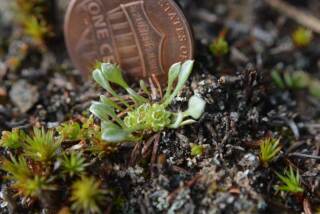MANZANITA
- Share via
Nature’s splendid sculpture, the manzanita, grows prolifically in the mountains north of the San Fernando Valley.
A native shrub that often matures to the stature of an elegant small tree, the manzanita dots the mountains with contrasting textures and colors.
Under a dense mantle of leathery, gray-green leaves, its burnt-red branches twist into fantastic shapes, and its polished red bark peels in strips from a stout trunk that often splits with age.
A winter bloom of white flowers shaped like small, inverted urns leads to the red berries that give manzanita both its scientific and common names.
The genus name, Arctostaphylos, comes from two Greek words meaning “bear berries.” The word manzanita means little apple in Spanish.
Wildlife consumes these berries in great quantity and American Indians also ate some varieties and produced a manzanita-berry cider.
Its popularity as “mountain driftwood” has required protection of the manzanita. Although it is illegal to collect in the wild, dozens of varieties are cultivated domestically.
Manzanita can be purchased at the Theodore Payne Foundation, a nonprofit organization in Sun Valley that grows native Southwest flora.
This example stands behind the Saugus Ranger Station in Angeles National Forest, where there are many more, each a natural work of art.







